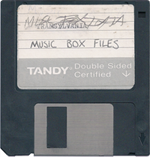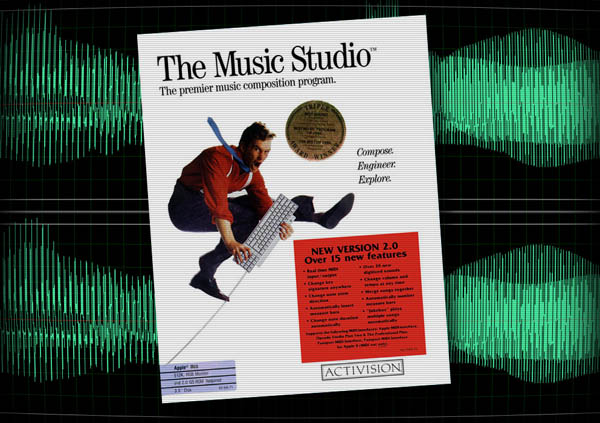The Music Studio Instrument Samples
I recently took the time to sample all of the default sounds from the Apple IIgs music composition program The Music Studio for use with my new sampler. The sounds were recorded directly out of my IIgs via an Applied Engineering sound card and into the Octatrack. I then took the WAV files into my PC and cleaned up the audio a bit. The IIgs outputs a rather noisy signal.
The samples are organized into four sets: Jazz, Rock, Classical and Voices. Each set has about fifteen instruments and each instrument was sampled at six octaves of C. Jazz also contains a couple drum kits which I broke apart and sliced into eight notes each. I tried to create nice evenly sliced sample chains but they are a tad off so they require a little manual tweaking after auto-slicing them.

The Music Studio was one of the first music composition programs I ever used. Certainly, it was the best one I had used up until that time. Technically, the first would have been Will Harvey’s Music Construction Set on the Apple ][+ with a Mockingboard sound card, but I don’t think any of my compositions from that program have survived (I’ll have to dig around my old disks one of these days). Fortunately(?), my IIgs compositions have survived and have been imaged and archived. Now such classics as “Kill Your Mama” and “Robert is Coll” have been preserved for the ages. Most of what we did in The Music Studio was transcribe my brother’s heavy metal guitar tab sheet music. So there’s a lot of G’n’R and Metallica riffs.
What made the program so cool (or “coll” if your are my typo prone teen aged self) was the inclusion of drum sounds. In hindsight, really bad drum sounds but drums nonetheless. It was my first real go at creating electronic music. I had no idea how performers like Cabaret Voltaire or even Devo were able to program their keyboards to play music automatically. There was that Jan Hammer Miami Vice video where you actually got a glimpse of a computerized rig (probably a Fairlight or something else that cost more than a car) and this seemed about as close to that as I could ever get.
Unfortunately, The Music Studio had a lot of quirks that made it really difficult to use. Although it uses a standard music staff for notation, it really plays notes like a piano roll. Meaning, if you have a whole note you want to ring out under several quarter notes you have to insert a bunch of redundant looking rests above the whole note. Otherwise, it plays the entirety of that long note before playing the quarter notes that are after it. Confusing, yes. Practically speaking, what this means for the composer is they have to put a bunch of evenly spaced rests across the top of the song scroll to insure the play head keeps moving along. The other major limitation is that you can’t have two instruments play the same note at the same time. That made any sort of complex arrangement a matter of spacing instruments across the staff all while avoiding your kludge of rests.
Until I was exposed to MOD files and tracking software on my PC this is how I thought music was made on a computer. Even Q-Bob’s music was created using a similar looking MIDI composition program. FastTracker and MadTracker freed me of this notion and from there on I began to make music more in line with what I wanted to do as a teen.
The Music Studio did have a very recognizable sound though. If you ever played Dream Zone you know exactly what I mean. These samples now allow us to get some of that distinctive sound into modern music apps and hardware. So, use the link at the bottom to download the set for yourself. In the meantime, here’s the first composition I made using the samples:

